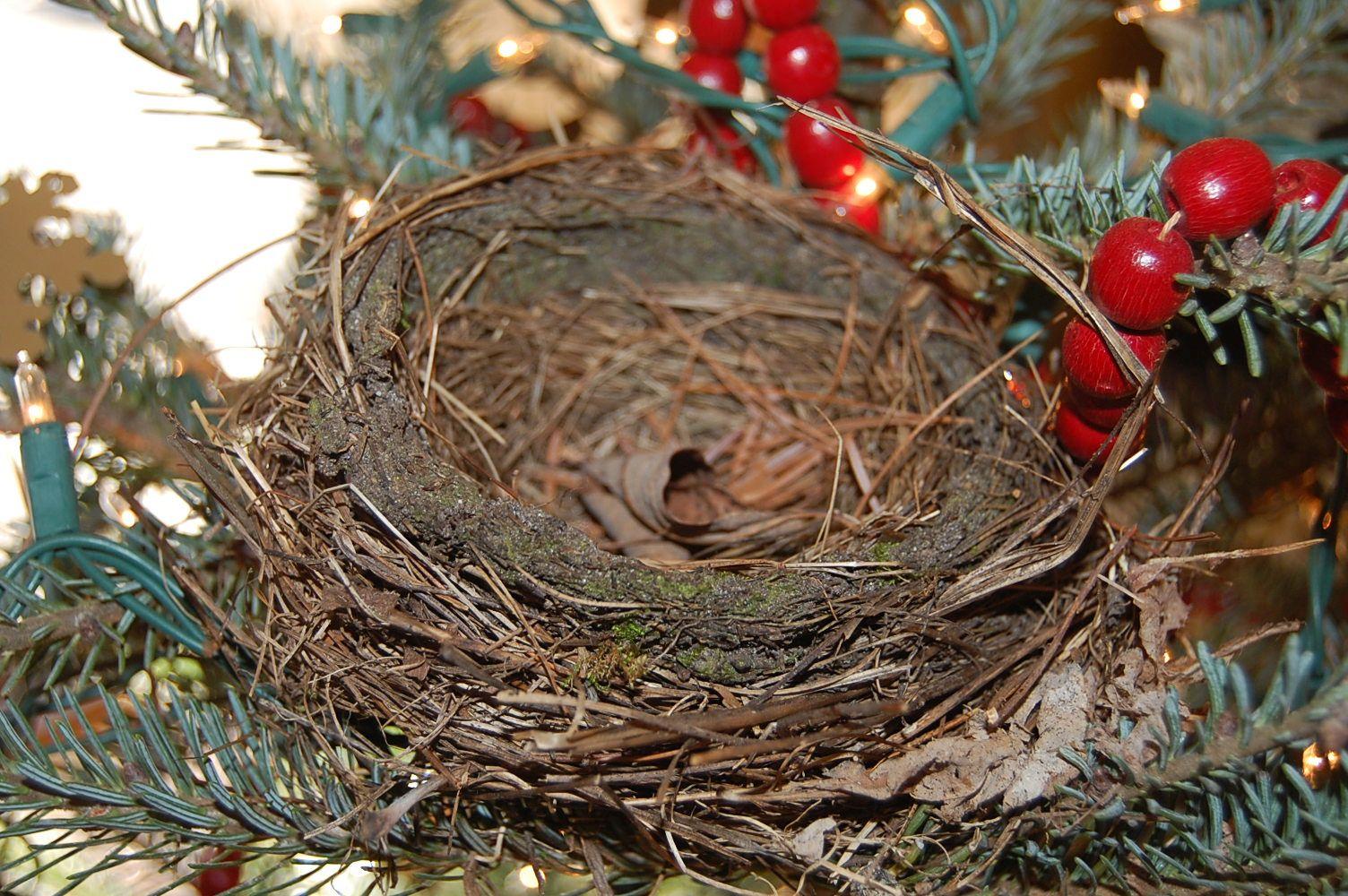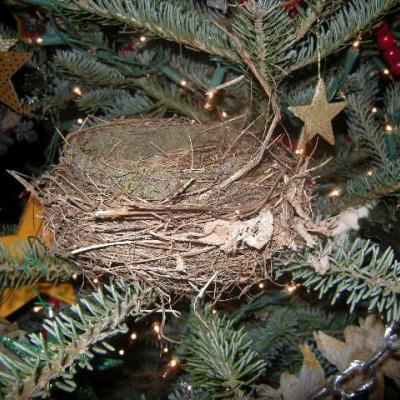A boyhood discovery turns out to be the gift of a lifetime
- Tags:
- Working Forests,
- Recreation

The elegant, little woven cup of root hairs and grass was lined with moss and a few downy feathers -- tucked like a miniature Christmas wreath in a fork of a balsam bough. Photo Dave Anderson
A boyhood discovery turns out to be the gift of a lifetime
The unmistakable scent of balsam was exotic to me when I was a boy, growing up on a street planted with ornamental hardwood trees in the crowded suburbs of northern New Jersey. The “Christmas tree smell” represented a foreign land – a faraway kingdom of pointy trees; an authentic, snow-clad forest of fragrant spruce and fir that I glimpsed as a backdrop in “Rudolph the Red-Nosed Reindeer” and the other classic holiday television specials of the 1960s.
Each year, my family would choose a balsam fir from among hundreds of neatly cut evergreens racked three and four deep in the parking lot of our local YMCA. I remember exploring the asphalt understory, crawling through fallen needles beneath a manicured forest. In the bright glow of hanging incandescent bulbs, we excitedly played hide-and-seek in the trees, as our exhaled breath steamed and mixed with balsam in the chilly December night air.
Back home in the living room, warmed by an artificial log burning in the fireplace and Bing Crosby and Nat King Cole albums playing on the high-fi, we would drink eggnog and watch dad wrestle the tree upright in its green and red steel stand. While we tested strings of colored lights brought down from the attic, our tree would reanimate for the first time since leaving its childhood forest, limbs slowly unfurling as it magically “drank” from the water reservoir in which it was now planted.
One year, I found a bird’s nest in our tree, a curious natural relic.
The elegant, little woven cup of root hairs and grass was lined with moss and a few downy feathers -- tucked like a miniature Christmas wreath in a fork of a balsam bough. I lifted the nest from its perch and held it in my hands to admire its architecture before carefully replacing it.
What a revelation! Just imagine – our tree was once summer home to a family of wild birds nesting in that distant northern forest.
What type of birds were the nest-builders? Why had they selected our tree from among hundreds to be so distinguished? The Christmas nest pre-decorated our tree and became a great gift, a harbinger of good fortune.

After Christmas, I packed the little nest away in the box of holiday ornaments and, in subsequent years, I placed it ceremoniously on a bough of our tree. The magic of the nest was renewed annually even as the nest itself fell apart.
Then one year, forgive me for confessing this, Mom: my parents bought an artificial tree -- and the spell was forever broken.
The tradition I’d created couldn’t overcome the insult of a shiny new, sterile, fire-resistant, steel and plastic tree. Having the same artificial tree year after year rendered the little nest obsolete. The nest was real, after all; and the tree, a fake.
While my folks sympathized with my pleas about the loss of the balsam smell, they countered that their new-fangled “tree” was always full and shapely, easy to set-up and take down, never dropped a needle and never needed water. It also never magically drank any, either.
Today, I celebrate the December holidays in rural New Hampshire, my home of more than 20 years. More often than not, the forest right outside my door is snow-clad by Christmas. I journey one hour north through the once-faraway kingdom of pointy trees -- that fragrant forest of spruce and fir growing in the White Mountains.
At the Forest Society’s Rocks Estate in Bethlehem, I help to carry, bale, rack and tie Christmas trees to the roofs of cars headed to south to the once familiar leafy, tree-lined suburbs of Boston and New York. And at the end of the day, I choose my own perfect, fresh-cut, real Christmas tree.
There’s a Currier and Ives moment carrying a fresh, cold Christmas tree into a warm house. The smell of the balsam fills the room, kindling childhood memories and nostalgia for the innocence of childhood. Even sullen teenagers grow sentimental in the ritual hanging of lights and ornaments. Handmade decorations of paper, pasta and glue, with names written in crayon on the back, hang beside antique painted glass ornaments from grandmother’s collection. The treasures tell a story, a shared family history of recent Christmases and those long past.
When I watch my children and grandchildren trim the family tree, and making new memories of their own, I invariably re-tell the story of the Christmas nest and I try to explain what it symbolized to me, growing up in a place far more crowded and urban than our rural tree farm.
Young children make surprising and long-lasting attachments to the natural world. Their encounters with nature, however subtle, yield a powerful empathy for life outside the narrow economy of manmade goods and services.
In time, a young naturalist’s worldview can become the cornerstone upon which all later life experience is both sought and built. Many adults, like me, attribute a strong personal or professional connection with nature to a formative early experience.
Whether visiting a summer camp or working farm; fishing or catching frogs; building a tree fort in the neighbor’s woods, studying the ants in left field or a dandelion growing from a busy sidewalk, each child finds an open window. How long that window remains open – a moment or an entire lifetime – is a mystery.
Now, in my 40s with teenage children of my own, I’ve begun to see purpose in the gift of the Christmas nest.
Perhaps something as simple as a woven cup of roots, grass, feathers and moss was designed to cradle an imagination as much as its clutch of eggs and to brood my sense of place as well as its nestling birds. The Christmas nest, I now understand, gave flight to a fledgling naturalist on the wings of the birds who built it.
